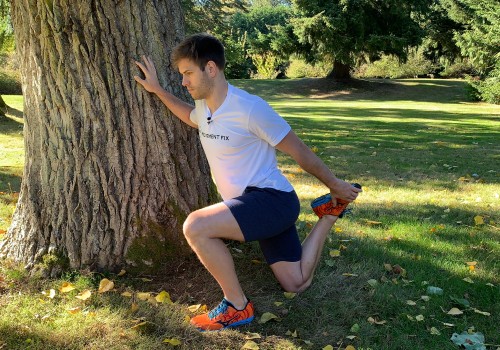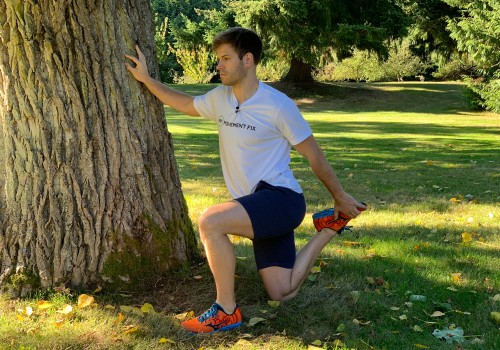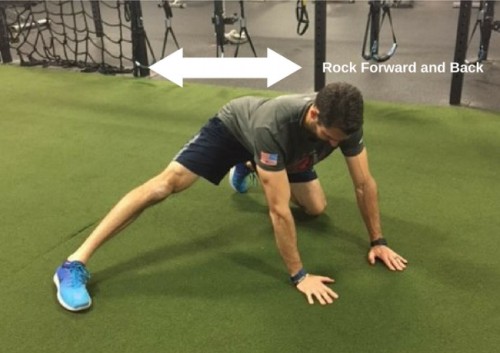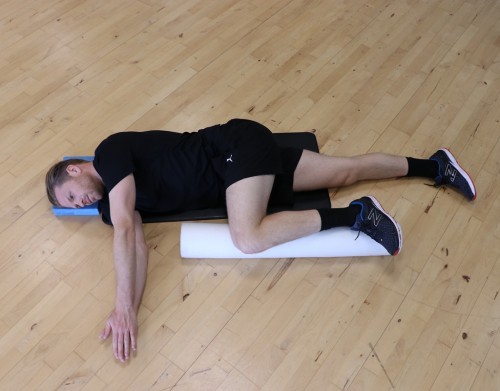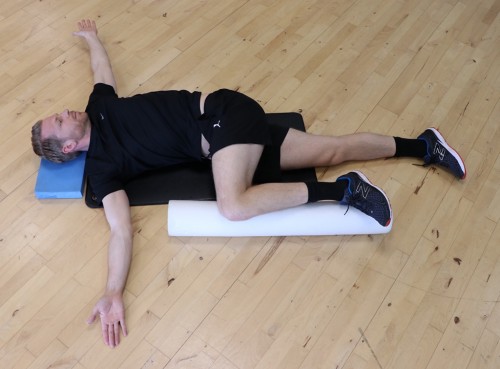By Aisha Visram, ATC, CSCS
We often think of hockey as being a fast paced and physical sport. Hockey players do need to be quick and strong, but mobility is critical for hockey players too! Hockey is a sport with a long season – players could potentially be skating 5-6 times a week from early September all the way into June. During periods of high training volumes and busy times of the season, mobility training becomes just as important as maintaining strength and cardiovascular capacity.
Hip tightness is a common complaint from hockey players, caused by the repetitive pattern of skating and a lot of time spent in a hip flexed position. Upper back tightness is also common problem, building up from forward leaning and rounded postures on the ice. Unaddressed, tightness can predispose athletes to overuse injuries and dysfunctional movement patterns. Traditional static stretching is a great way to improve flexibility, but mobility drills performed during an athletes warm-up help to increase range of motion, and prepare muscles for activity.
Here are some mobility tips for hockey players they can perform to maintain their range of motion and flexibility. Perform each of these drills on each side with 6-8 repetitions. You can perform 2-3 sets of these as part of your warm-up before on or off ice training.
3 Essential Mobility Tips for Hockey Players
1. Hip flexors
The most common complaint from hockey players is “tight hips”. In addition to causing hip dysfunction, tight hip flexors can lead to low back pain as well.
Hip flexor/quad rock:
Start in a half kneeling position with your left knee up and right knee on the ground. Use a wall for balance if necessary. Reach back with your right hand to hold your right ankle. Keep your torso upright and back straight. Slowly lean forward bending your left knee to increase the stretch on the right hip and quad. Pause, and return to the start position. Continue to rock forward and back until you have completed 6-8 reps. Repeat on the other side.
(Retrieved from https://themovementfix.com/how-to-therocking-quad-stretch/ )
2. Hip adductors
Commonly referred to as “the groin”, maintaining range of motion in the groin is critical for hockey players to avoid acute and chronic groin injuries.
Adductor rock:
3. Hip rotators/Thoracic Spine
Hockey players need strong hip rotators to generate force for skating. Tight rotators, just like hip flexors, can lead to low back pain. The thoracic spine, or upper back, when tight can cause shoulder and neck dysfunction. This drill addresses these areas, opening up the hips, upper back, and chest.
T-Spine 90/90:
Lie on your right side with your right leg straight and your left leg at a 90 degree angle. Start with both arms in line with shoulder height on the floor. Slowly lift your left arm while keeping the right one on the floor opening up the chest. Take the left arm as far towards the opposite side as it can go, feeling a stretch along the left thigh, low back, and chest. At the end point pause, and then return to the starting position. Continue this movement for 6-8 reps and then repeat on the other side.
(Retrieved from https://www.etpi.co/2018/01/08/developing-rotation-and-separation-the-thoracic-spine/)
Incorporating these mobility exercises into your routine to keep your body moving optimally can help prevent injuries and keep you healthy during the hockey season.
As part of the medical staff for the Adirondack Thunder Hockey Team, Capital Area PT has wide experience with sports therapy, specifically physical therapy for hockey players. If you have experienced an injury or are looking for a physical therapist in Queensbury NY or the Saratoga area to conduct a thorough sports screening, help with injury prevention or overtraining injuries, contact us or call 518-289-5242 Queensbury to reach our Queensbury, Malta – Saratoga, or Latham PT clinics. Ask us how we can help provide more information on autumn sports injury prevention for school, college and adult athletes in Saratoga Springs, Ballston Spa, Glens Falls , Queensbury, Latham, Troy and Albany NY regions.


